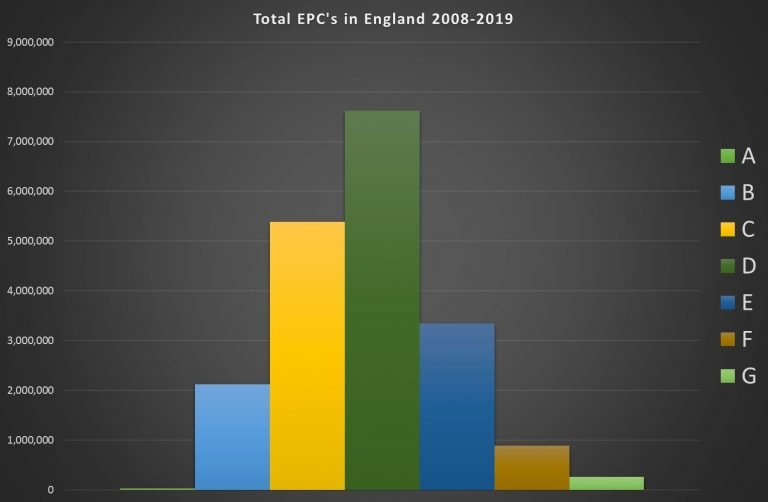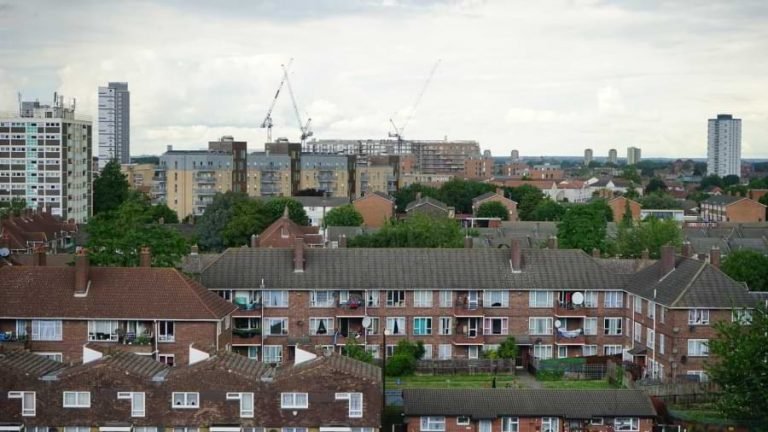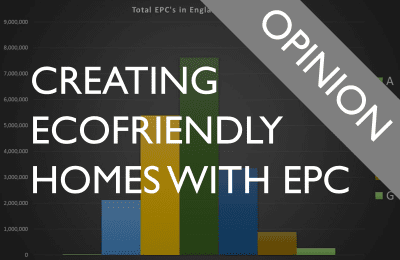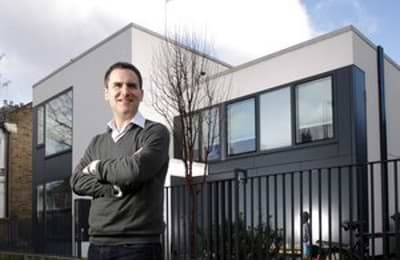We need to create more ecofriendly housing in the UK. Can using EPCs be one way to go about it?
EPC’s are great. They’ve worked brilliantly for electrical appliances. They’ve been so successful that we have had to split the old A rated band into A+, A++ and even A+++.
This suggests their huge commercial impact and aligning consumer’s buying behaviour with the environment. It’s been great for business. The market for energy efficient appliances has grown from £2bn to £3bn a year.
The same cannot be said for housing. While there’s been some good news with an increase in new homes achieving top energy ratings in England, this chart shows just 11% of our homes are rated EPC A or B (A barely registers at a minuscule 0.2%).

Are energy costs too low?
I often ask people how much they think they pay for 1kwh of gas or electricity – I find it vaguely shocking how few people actually know!
I think that as a society we pay too little for our energy so that we are not sufficiently incentivised to make our homes more energy efficient (hence the average ‘D’ rating and the low uptake of A rated properties).
The truth is that we pay nothing for ‘externalities’. So a unit of electricity (it costs about 12p by the way!) costs us (the consumer) the same whether it comes from a coal powered station or a wind turbine.
That should not be the case. The impact of coal is worse on society and so we should be paying more for it.
This is the argument around carbon offsetting. We’re not there yet, but it strikes me that if we take into account the ‘entire’ cost of electricity (and indeed other things), we (as consumers) would be heavily incentivised to reduce our energy consumption or switch to low carbon offers or indeed, ‘green up’ our homes.

People won’t change on their own
As architect Neil Davies says, “you wouldn’t buy a fridge or washing machine with 20 year old technology in it but this is what is repeatedly being specified in projects today.”
If we are not going to create the real life cost of items, we should at least not be promoting or incentivising bad behaviour.
I think that there is no excuse not to link every single financial housing incentive to the green agenda (and this should apply to other sectors too). If we want to change behaviour, we have to employ a carrot and stick exercise. We have to discourage (financially) carbon consumptive behaviour and encourage (financially) carbon cutting behaviour.
Engineer James Burt agrees on the need to incentivise behaviour, “See ecobonus in Italy, a scheme to lend 110% of costs to refurbish if you improve the energy performance by two brackets. Could improve lots of existing stock.”
This sentiment is echoed by architect Kristofer Adelaide, who says, “Retrofits should have got better review from the chancellor’s budget – as that is where the majority of the energy waste is currently. So retrofit and reuse needs to be reduced in VAT as an incentive to save existing buildings but also our environment.”
Architect Alex Franklin points out that, “To achieve an ‘A’ with new build means following/exceeding current best practices, whereas to achieve an ‘A’ for an existing house renovation is far more involved.” So perhaps the metric should adjust between new build and renovation projects.

So how can we use EPC to create more ecofriendly housing?
The Government has introduced a new 5% deposit scheme for first time buyers and to help them borrow more money to buy a home.
This is not sound economic policy as it just pushes house prices higher – but quite aside from creating an unsustainable mini-boom – it is a massive missed opportunity to increase the average EPC in the country.
The Government can easily do its part by making it much easier and cheaper to buy innovative energy efficient homes and making it harder and more expensive to buy less energy efficient homes. They’ve done this with electric cars, its time to do it with housing too.
How might this work in principle? Simple – link the percentage deposit to the EPC rating.
For example, if the home is an A rated new home or a B rated period home – you can get a 5% deposit from the Government.
If the home is a B rated new home or a C rated old home – you can get a 10% deposit from the Government.
That way, current home owners will be incentivised to do some energy efficient measures as it will increase their market of buyers, and housebuilders will want to build new homes that are A-rated.
It’s a win-win for the people and the planet.

Gus started in the property world over 20 years’ ago when he accidentally project managed his own loft conversion and then went on to do his own self-build home in NW London. he has been in property ever since. His believes self-build and custom build delivers better quality, better design, better value and is better for the environment. He sits on the national executive board at NaCSBA and chairs the custom build developer group. He is a member of the Expert Advisory Group and contributed to the Bacon Housing Review for Government. He is a frequent architectural judge and speaker and is a member of two design review panels.
New to Unboxed Homes?
We make self-build easy. We build customisable eco friendly new homes that you fit out yourself, or we fit out for you.
If you’ve ever wanted to build your own home but have been daunted by the idea or you want a project but don’t want the risk of buying a Victorian terrace that needs modernising, then sign up for our newsletter or our custom build register and we will send you emails with opportunities and land for sale that has been vetted as a good opportunity by our MD Gus Zogolovitch



